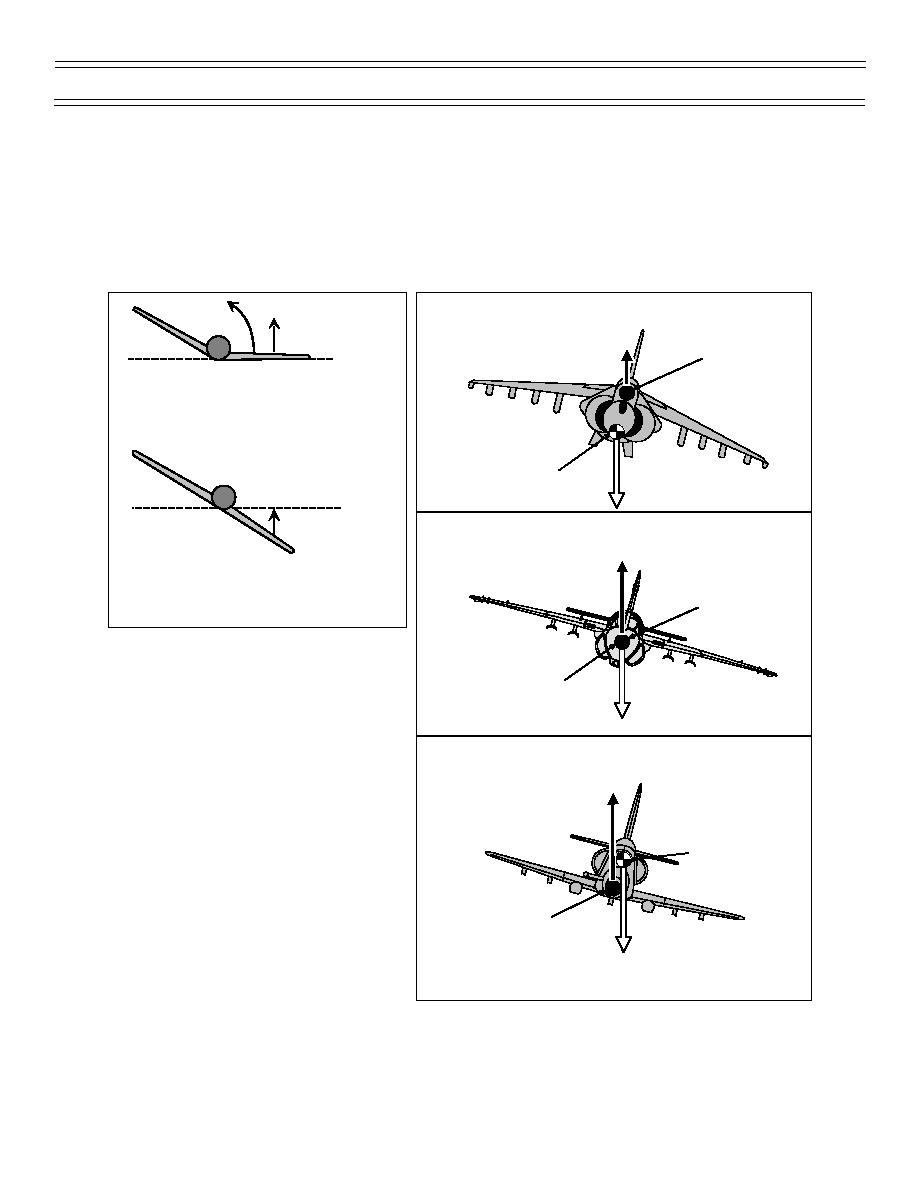
Aero Chapter 01, General Aerodynamics Review
T-45 Aerodynamics Student Workbook
LATERAL STABILITY
Static lateral stability or stability in roll indicates an aircraft’s tendency to return to wings-level flight. The
effect of the geometric dihedral of a wing is a powerful contribution to lateral stability (Figure 10). When a
wing with dihedral is in a sideslip, dihedral causes an increase in angle of attack on the downward wing
and a decrease in angle of attack on the upward wing. An increase in lift occurs on the down wing and a
decrease in lift occurs on the up wing. The result is a rolling moment that restores the aircraft to wings
level.
Stabilizing
M o re L ift
Center
of Lift
M o re S ta b le
W IT H D IH E D R A L
Center of
Gravity
L es s L ift
Neutral
W IT HO U T D IH E DR A L
Center
Figure 10: LATERAL STABILITY
of Lift
Wing location in relation to CG will have a
pronounced effect on lateral stability due to
Center of
the offset between lift and weight. A high
Gravity
wing location will create a rolling moment
that will aid in restoring the aircraft to
wings-level flight. A mid-located wing,
Destabilizing
where the AC is located on line with the
CG, will have a neutral effect on lateral
stability. A low wing location will tend to
continue an aircraft in a roll (Figure 11).
Center of
COUPLING
Gravity
Coupling is the interaction between roll,
yaw, and pitch. Due to coupling between
Center
roll and yaw, a swept wing aids both lateral
of Lift
and directional stability. As a swept wing
aircraft yaws, one wing becomes more
perpendicular to the relative wind while the
Figure 11: WING LOCATION
other becomes less perpendicular. Lift and
induced drag are increased on the wing into
the wind and are reduced on the wing out of
the wind. Roll and adverse yaw (yaw opposite roll) will occur. The nose of the aircraft will be pulled back
into the relative wind and lateral and directional stability is restored.
Page 8
(7-99) Original



 Previous Page
Previous Page
